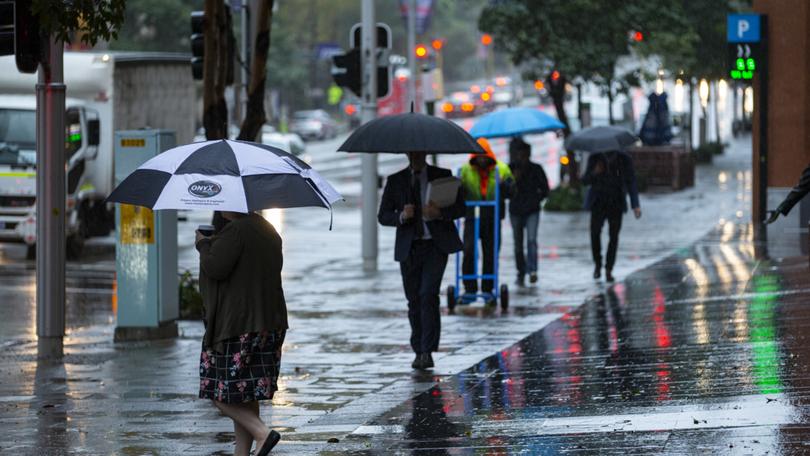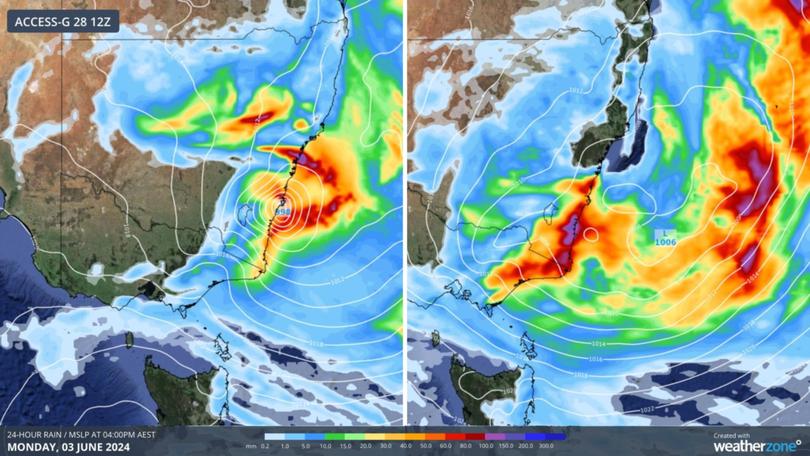Australia in for a soaking as 4000km weather band moves from drenched West Coast to Victoria, NSW

A massive weather system stretching 4000km is expected to bring rain to 80 per cent of the country as it moves from the west to the east coast.
The system has triggered severe weather warnings in Western Australia, NSW and the ACT, Victoria and Tasmania as the cloud band stretches across the country.
The moisture-laden northwest cloud band has delivered record rainfall to WA’s Kimberley region — Broome recorded 62.2mm as of 9am Thursday, the highest daily May rainfall in four years — andand central Australia — Alice Springs saw 28mm of rain, the highest daily May fall in 20 years.
Sign up to The Nightly's newsletters.
Get the first look at the digital newspaper, curated daily stories and breaking headlines delivered to your inbox.
By continuing you agree to our Terms and Privacy Policy.It will continue to march eastward, with rain expected in western Victoria and Tasmania from Thursday, and in southwest NSW from Friday into the weekend, the Bureau of Meteorology said.
The pools of cold, unstable air from the northwest could also produce thunderstorms, hail and snow.

“The rain band is forecast to continue tracking eastward into eastern parts of South Australia Victoria, Tasmania, southwestern parts of Queensland in the Northern Territory,” meteorologist Sarah Scully said.
Thunderstorms are possible, with the potential for widespread rainfall totals from five to 15mm and isolated totals of up to 50mm.
“Tomorrow it’s going to be wet and it’s going to be windy across the southeastern quadrant of the country,” Ms Scully said.
“It may (also) be a wet weekend for eastern parts of NSW with rain areas and potentially widespread showers.”
Elevated parts of Victoria and the south coast and eastern Tasmania are warned to expect damaging winds from Thursday.
Heavy rainfall may develop in northeastern Victoria late on Thursday, with six-hourly rainfall totals of 50 to 70mm possible.
“These may lead to flash flooding,” Ms Scully said.
A second rain-bearing system is expected to bring follow-up rain to parts of WA from Saturday or Sunday as an East Coast Low (ECL) will bring wilder wet weather to coastal NSW later this weekend, too.

Weatherzone says the low-pressure ECL is likely to bring any combination of heavy rainfall, destructive winds, flooding, erosive surf, and cold temperatures.
Computer models estimate rainfalls of around 100-200mm, and winds of at least 50-70km/h, up to 120km/h in worst-affected areas.
Severe ECL’s form every two to four years on average, the last to hit Australia was in July 2022. An ECL was at play when Collaroy Beach was destroyed in June 2016 and the Pasha Bulker was beached in June 2007.
This low is expected to form on Sunday afternoon and intensify overnight into Monday morning, possibly continuing into Tuesday, with the South Coast of NSW and North East of Tasmania set to be worst hit.
Dangerous surf conditions may be felt as north as Newcastle in NSW, to East Gippsland in Victoria, and Hobart.
— with AAP
